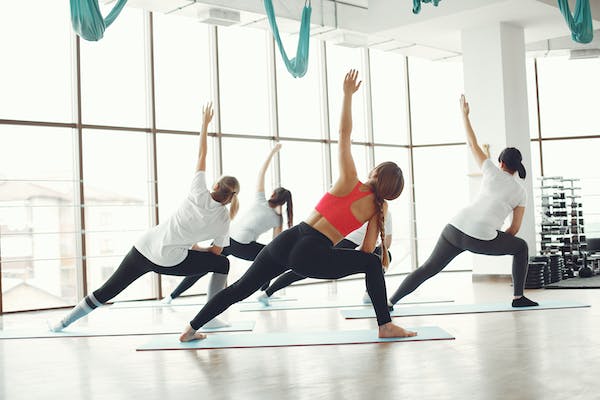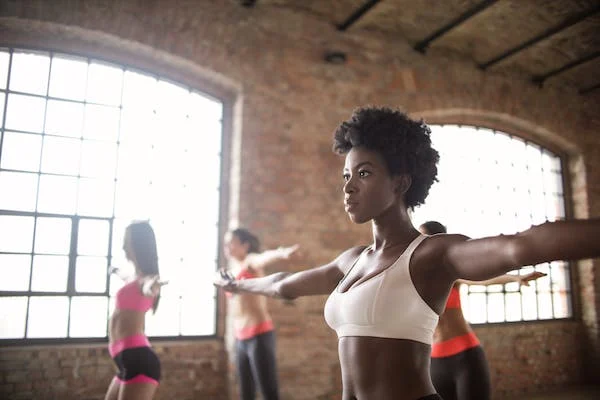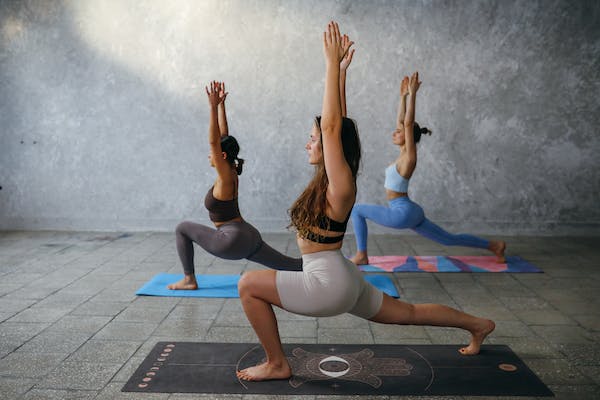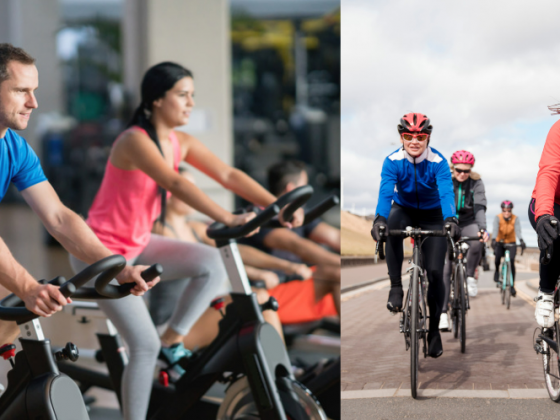
Aerobic Fitness Pilates represents a marriage of traditional Pilates principles with aerobic exercises’ high-energy, dynamic nature. It’s a comprehensive fitness regimen that targets the core, enhances flexibility, and elevates cardiovascular endurance. What distinguishes aerobic fitness Pilates is the deliberate fusion of controlled Pilates movements with the invigorating pace of aerobic workouts. It’s a captivating realm where mindfulness meets momentum, allowing individuals to sculpt their bodies while boosting overall fitness.
Defining Aerobic Fitness Pilates:
At its core, Aerobic Fitness Pilates intertwines the core tenets of Pilates, emphasizing posture, alignment, and controlled movements, with the fast-paced, heart-pumping essence of Aerobics. The focus is on engaging various muscle groups through repetitive, rhythmic exercises, creating a synergy that promotes strength, flexibility, and endurance. What sets it apart is the deliberate inclusion of cardiovascular components, amplifying its impact on overall fitness.
Origins and Evolution
Pilates, drawing inspiration from calisthenics, yoga, and ballet, comprises a series of exercises that enhance mobility and strength across significant muscle groups in the body, primarily emphasizing deep core muscles and fostering improved posture, flexibility, balance, strength, and body awareness.
Pilates, versatile in its aerobic and non-aerobic forms, demands focused concentration as you maneuver your body through precise motions, aiming to establish a central control point. With each exercise prescribed with specific placement, rhythm, and breathing patterns, Pilates prioritizes precision over exhaustion, fostering intense concentration rather than sweating or straining. Workouts typically encompass low-repetition sequences lasting 45 to 90 minutes, comprising floor-based mat exercises and specialized resistance equipment. Tailored to individual needs, Pilates adapts to various fitness levels, accommodating everyone from elite athletes to individuals with limited mobility, pregnant women, and those with lower fitness levels through personalized attention and continual exercise evaluation.
Aerobic exercise comprises repetitive and structured physical activities that activate the body’s metabolic system to generate energy through oxygen utilization. Typically rhythmic and repetitive, these exercises engage large muscle groups and offer adjustable intensity levels to regulate the effort exerted. By elevating heart rate and oxygen consumption, aerobic exercises, meaning “with oxygen,” rely on controlled breathing to deliver oxygen to muscles, facilitating energy burn and movement.
Pilates, developed by Joseph Pilates in the early 20th century, centered on strengthening the body through controlled movements. On the other hand, Aerobics gained popularity in the late 1960s, focusing on high-energy workouts for cardiovascular health. The fusion of these two distinct fitness disciplines birthed Aerobic Fitness Pilates, offering a novel approach to holistic fitness. Over time, it has evolved, integrating various elements and techniques from both Pilates and Aerobics, continually refining the workout experience.
Cardiovascular Benefits of Aerobic Fitness Pilates
A stronger heart operates slower and pumps blood more effectively, enhancing blood circulation throughout the body.
Pilates’ posterior-lateral breathing enhances breath control, facilitating the intake of nourishing oxygen into your body while expelling waste more efficiently. Developing better breathing habits enhances the enjoyment of cardio training and maximizes the benefits you gain from your efforts.
Pilates, increasingly popular in recent years, is recognized for its capacity to enhance overall health and well-being. Notably, Pilates has demonstrated effectiveness in treating cardiovascular disease. Aerobic exercise is the most effective form of physical exercise for primary and secondary heart disease prevention. While the Pilates system isn’t traditionally aerobic, we integrate cardio interval training into Heart Healthy Pilates sessions, offering the benefits of a 55-minute run and more.
Aerobic exercise, cardiovascular exercise, or cardio elevates your heart rate and facilitates increased blood circulation. This exercise relies on oxygen, hence the term “aerobic,” which is vital for muscle movement and strength during physical activity. Using stored carbohydrates and fats, your body generates energy with oxygen. Aerobic exercises, which can be sustained for extended durations depending on intensity, engage your cardiovascular and muscular systems to support continuous activity lasting at least 30 minutes.
Aerobic exercises predominantly influence aspects of fitness related to health, particularly cardiovascular endurance and body composition. These activities elevate heart rate and engage large muscle groups, lowering the risk of heart disease and diabetes.
Aerobic Fitness Pilates serves as a potent catalyst for cardiovascular health. The sustained movements are often choreographed to elevate heart rates and stimulate better blood circulation and oxygen flow. As participants engage in rhythmic exercises, they experience increased stamina and endurance, fortifying the heart and improving cardiovascular fitness.

Muscle Engagement
One of the standout features of Aerobic Fitness Pilates is its ability to target and engage specific muscle groups. This deliberate engagement not only fosters strength but also promotes flexibility and balance. Through the controlled movements and the incorporation of different exercises, participants experience comprehensive muscle development, which translates to improved overall physical strength.
Pilates incorporates significant stretching, leading to enhanced flexibility. This increased flexibility broadens your range of activities and serves as a protective measure against injuries, promotes muscle relaxation, and helps maintain mobility and range of motion as you age.
Pilates boosts strength, postural alignment, and mood, notably enhancing body flexibility. Consistent practice elongates muscles, improving flexibility and expanding joint range of motion.
Pilates is renowned for sculpting long, lean muscles by targeting distinct muscle groups, fostering balanced muscle development, and enhancing muscle tone, strength, and endurance.
According to earlier research, a 12-week Pilates regimen enhanced abdominal endurance among healthy male and female participants aged 25 to 65.
In aerobic activity, you engage in repetitive movements involving large muscles in your arms, legs, and hips, prompting rapid responses from your body. Your breathing intensifies, allowing for increased oxygen saturation in your blood. Simultaneously, your heart rate escalates, boosting blood circulation to your muscles and lungs to support the increased demand, your capillaries expand, facilitating enhanced oxygen delivery to your muscles and expelling waste substances like carbon dioxide and lactic acid.
Furthermore, your body releases endorphins, natural pain relievers that boosts overall well-being and aids in a heightened sense of happiness.
Balance and Coordination
The combination of Pilates and aerobic elements in this fitness regimen works harmoniously to refine balance and coordination. Participants focus on controlled movements and body awareness, enhancing their ability to maneuver with precision. This is a vital workout component, promoting physical dexterity and mental acuity.
The core, often termed our center, plays a pivotal role in balance and coordination. Strengthening the core through Pilates facilitates the discovery and maintenance of balance, reducing the likelihood of injuries during multitasking movements. With improved balance and coordination comes heightened proprioception, fostering more efficient and balanced movements while decreasing the risk of falls and accidents.
Equipment Overview
To engage in aerobic fitness Pilates, minimal equipment suffices. Mats, resistance bands, and small hand weights often form the basic setup. While these are sufficient, optional accessories like stability balls and Pilates rings can add depth and challenge to the workouts.
Suitability and Accessibility
The beauty of Aerobic Fitness Pilates lies in its adaptability. It’s suitable for a broad spectrum of individuals, irrespective of fitness levels. Modifications and exercise variations allow beginners and seasoned fitness enthusiasts to benefit from this regimen. Its inclusive nature ensures accessibility for many, making it a versatile and welcoming fitness option.
Finding Qualified Instruction
Seeking qualified instructors or reputable classes is pivotal when embarking on an Aerobic Fitness Pilates journey. Certified trainers who understand the dynamics of both Pilates and aerobic exercises ensure a safe and effective workout experience. Their guidance amplifies the benefits and minimizes the risk of injury.
Sample Workouts
A typical Aerobic Fitness Pilates routine includes a sequence of exercises alternating between Pilates-based movements and higher-intensity aerobic exercises. This blend ensures a balanced, full-body workout. A sample routine might consist of a warm-up, core-strengthening Pilates exercises, segments of cardio-boosting moves, and a cooldown with stretching and relaxation techniques.
Progression and Intensity
Progressing in Aerobic Fitness Pilates involves gradually increasing the intensity and complexity of exercises. Participants can level up by incorporating advanced movements, intensifying cardio segments, or integrating new equipment. Tracking progress and recognizing personal milestones can motivate individuals to challenge themselves continually.
Incorporating Aerobic Fitness Pilates into Your Routine
This fitness fusion can seamlessly complement other exercise regimens. Its adaptability allows integration into existing workout schedules, offering diversity and a unique workout experience. Balancing it with other exercises ensures a well-rounded fitness routine.
Dietary Considerations
Aerobic Fitness Pilates benefits from a nutritionally sound approach. A balanced diet of proteins, healthy fats, and carbohydrates fuels the body for optimal performance. Prioritizing hydration and consuming nutrient-dense meals supports the physical demands of this exercise fusion.
Recovery and Rest
Rest and recovery are as crucial as the workout itself. Adequate sleep, proper hydration, and allowing muscles time to recuperate ensure optimal performance and prevent burnout or overexertion.
Addressing Common Misconceptions
Aerobic Fitness Pilates is sometimes misconstrued as solely catering to a specific demographic or as a low-impact exercise form. However, its adaptability suits various age groups and fitness levels. Additionally, while it might be low-impact, it offers a high-intensity workout experience.
Adapting to Plateaus
Plateaus are a natural part of any fitness journey. Techniques such as varying exercises, intensifying workouts, or even seeking different class formats can help overcome these plateaus. A change in routine often reignites progress and motivation.
Innovations and Trends
The landscape of Aerobic Fitness Pilates is continually evolving. Advancements in equipment, digital platforms for classes, and the incorporation of augmented reality or virtual reality into workouts indicate a promising future. These innovations will likely enhance the overall experience and accessibility of this fitness regime.
Conclusion:
Aerobic Fitness Pilates is a testament to the innovative fusion of traditional and modern fitness approaches. It’s a dynamic, empowering journey that offers a transformative fitness experience that merges Pilates’s grace and precision with the vigor and vitality of aerobic exercises. By embarking on this journey, individuals open themselves to a world where mindful movement meets exhilarating dynamism, allowing for a holistic and empowering fitness transformation.





